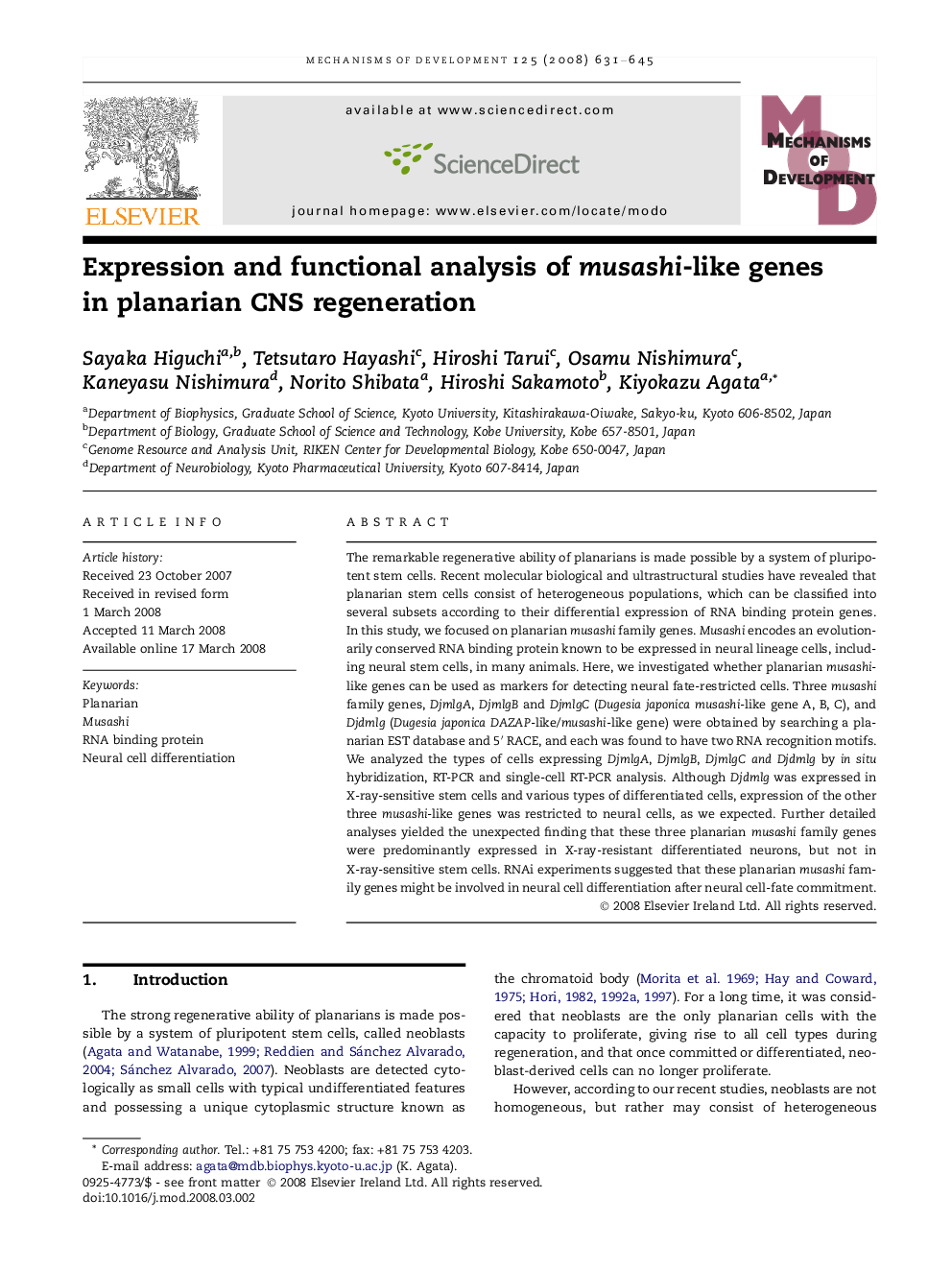| Article ID | Journal | Published Year | Pages | File Type |
|---|---|---|---|---|
| 2194919 | Mechanisms of Development | 2008 | 15 Pages |
The remarkable regenerative ability of planarians is made possible by a system of pluripotent stem cells. Recent molecular biological and ultrastructural studies have revealed that planarian stem cells consist of heterogeneous populations, which can be classified into several subsets according to their differential expression of RNA binding protein genes. In this study, we focused on planarian musashi family genes. Musashi encodes an evolutionarily conserved RNA binding protein known to be expressed in neural lineage cells, including neural stem cells, in many animals. Here, we investigated whether planarian musashi-like genes can be used as markers for detecting neural fate-restricted cells. Three musashi family genes, DjmlgA, DjmlgB and DjmlgC (Dugesia japonica musashi-like gene A, B, C), and Djdmlg (Dugesia japonica DAZAP-like/musashi-like gene) were obtained by searching a planarian EST database and 5′ RACE, and each was found to have two RNA recognition motifs. We analyzed the types of cells expressing DjmlgA, DjmlgB, DjmlgC and Djdmlg by in situ hybridization, RT-PCR and single-cell RT-PCR analysis. Although Djdmlg was expressed in X-ray-sensitive stem cells and various types of differentiated cells, expression of the other three musashi-like genes was restricted to neural cells, as we expected. Further detailed analyses yielded the unexpected finding that these three planarian musashi family genes were predominantly expressed in X-ray-resistant differentiated neurons, but not in X-ray-sensitive stem cells. RNAi experiments suggested that these planarian musashi family genes might be involved in neural cell differentiation after neural cell-fate commitment.
